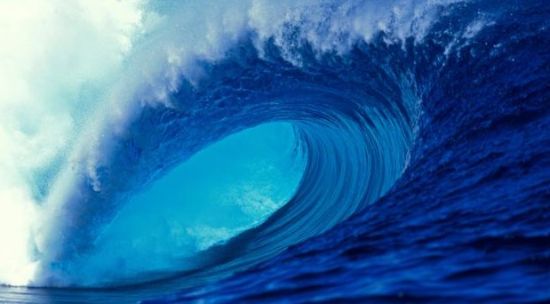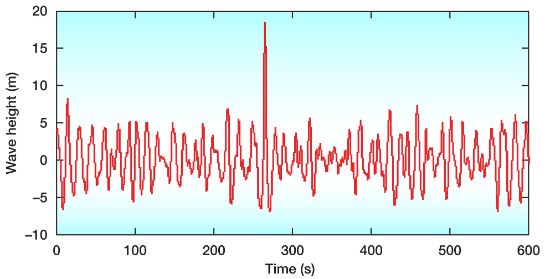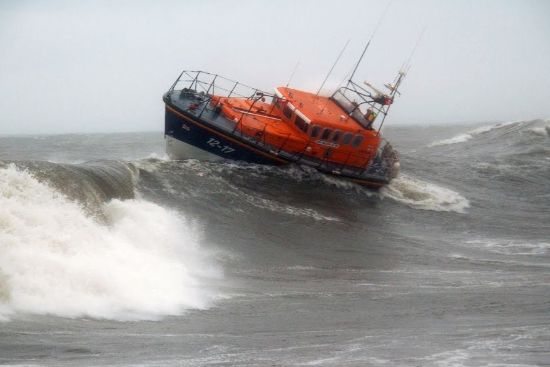Rogue Waves – Part One
By Dag Pike

Wild storms make for wild seas. For hundreds of years, sailors have returned to harbor with tales of encountering huge waves in the ocean. These extreme waves have often been considered to be folklore, the product of imaginative sailors’ minds, just like some of the tales of sea monsters.
They Are Real
Then, authoritative reports about the waves started to emerge to be followed by some dramatic photos, and the world of extreme waves became reality. Today, there is sophisticated wave-measuring technology and satellite observations to help detect and determine these extreme waves, and the 100-foot wave has now been experienced and measured in the Atlantic. For the long-distance cruising man, rogue waves are something to take into account in your passage planning.
In the classic book Heavy Weather Sailing, there are some reports of yachtsmen experiencing these extreme waves, mainly in the Southern Ocean. These were sailboat experiences. But now with motoryachts venturing out on ocean cruises, the world of rogue waves is something that has to be considered.
Chances of a Rogue Wave
While there is a growing body of evidence about the existence of extreme waves and their increasing size, there is no doubt about the statistics. Figures from the British National Institute of Oceanography calculated using a random process formula suggest that if you take the average height of waves in a wave train, then one wave in 23 will be twice that average height and one wave in 1,175 will be three times the average height.

Those figures will give seamen pause for thought, but the additional chilling statistic is that one wave in 300,000 will be four times the average height. Think about that and you have the prospect of meeting a massive 20-meter wave when the average wave height is just 5 meters.
However, to put this into perspective, 300,000 waves are an awful lot of waves and that equates to one wave every 6,000 miles or so. Even then, these extreme waves only tend to occur in more extreme weather conditions, which you will have tried to avoid anyway. In 65 years at sea, I have experienced three rogue waves. These monsters were only found in winds of gale force or more.
Extreme Conditions
One was in a hurricane in the Caribbean, where you might expect to find extremes. This was back in the 1950s, when hurricane warnings were not up to modern standards and forecasting the track of these storms was not always accurate. Our 6,000-ton freighter got caught up in this maelstrom of wind and water as we were approaching the Sombrero Passage. Fortunately, we had plenty of sea room to cope.

Close to the eye of a hurricane, the visibility was close to zero. So we didn’t see this monster wave that appeared out of the maelstrom, only its after-effect when we found that two of the ship’s metal lifeboats had been flattened against their davits. Even the funnel was damaged by that wave that came on board on the port side. That must have been a big one to send solid water 30' (9 m) above the waterline. But you do expect these extremes in hurricane conditions.
Closer to Shore
That was a deep-water experience, but another scary moment was when we were searching for a fisherman who was reported to have washed off the rocks in the Bristol Channel on the west coast of the UK. We were in a brand-new lifeboat being delivered to its station, on passage along the coast in force 7 gale and looking forward to getting into the harbor a bit farther up the coast.
The Coast Guard called us on the radio to say a fisherman had been washed off rocks and would we search. In response, I planned to run parallel to the shore just outside the surf line where big seas were breaking in the northwesterly onshore gale. We would have gone inside the surf if we had seen something or someone to rescue but the risk was too great during the searching period.

As you can imagine, all eyes were turned towards the shore to look for the man reported in the water. I was on the helm and watching towards the shore as well when I was suddenly conscious of it going dark. I looked to seaward and there was this towering wall of water rearing up alongside us with the sun shining weakly through it! You know when the sun is shining through a wave that you don’t want to be on the lee side of it and it looked like this near-vertical wall of water was going to curl over and crash down on us.
It was too late to do anything but pray and we went up the side of that wave-like an express elevator and toppled over the crest just as the wave broke. It was a narrow escape from a major capsize that would have seen us washed up on the beach even though we were aboard a self-righting lifeboat.
I would estimate that breaking wave at three or four times the average wave height that day and so it had been just starting to break in the deeper water to seaward of our track. There was just that one big wave and then a big drop into the trough on the other side where you could almost see the seabed.